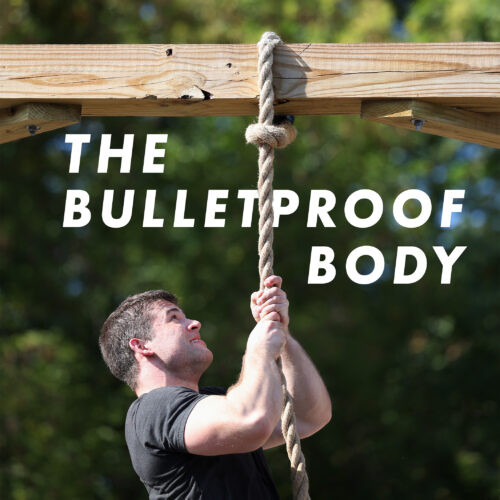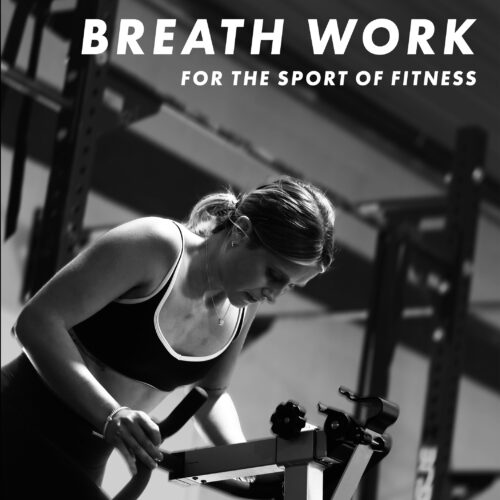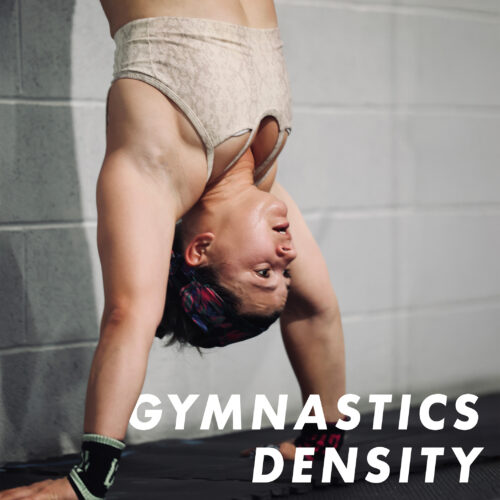Power is the key to athletic prowess. It’s the marriage of strength and speed. My goal is for you to learn how to best program for the expression of power in your competitive sport.
Introduction
Learning Outcomes. My goal is for you to know how to…
(1) Assess the needs of an athlete
(2) Create a plan for an athlete’s career, training year and current cycle
(3) Program for power within an individual session
(4) Select exercises, set & rep schemes and work-rest ratios to prepare the athlete for their sport
Anchoring question: What are the demands of the sport?
5 Powerful Truths [Principles of Power]
Statement #1: Strength is a Prerequisite to Power.
You cannot produce power without being strong.
Therefore, if someone is powerful, you know he or she is strong.
They can create fatigue & damage quickly, and they will need more time to recover.
And likely, if an athlete is not powerful, you know he or she is weak.
It takes longer for them to create fatigue and damage, so they need less recovery time.

Statement #2: Power Must Always Be Referred to in Regards to Time.

Statement #3: Training is speed-specific: velocity matters.
Powerlifter: Tested in Absolute Strength – 0.5 m/s
Sprinter: Tested in Absolute Speed – 10 m/s
Statement #4: Power (+strength & speed) are general qualities.
Yes, sport-specific qualities are important.
No, you don’t want to rely on them heavily year-round.
Statement #5: Adaptation of general qualities are driven in the off-season.
The job of a Strength & Conditioning Coach is to prepare athletes for the demands of their sport.
One of the biggest parts of this job is making sure the athlete doesn’t break down or get injured.
The solution is driving systemic change in general qualities, the longer you have an athlete.
Listen: The Fitness Movement Podcast: #006 Programming for Groups
Creating a Long-Term Plan
Step 1: Long-Term Development: Athletic Career & Training Year
Create a long-term plan for your athlete that maximizes their performance for an upcoming season, as well as their overarching athletic career.
Don’t guess. Assess.
Assessments should be relevant.
Relevance is context dependent.
Questions to consider…
- When does the athlete need to peak for their sport(s)? How long do you have until then?
- What are the demands of their sport(s)? What physical qualities need to be developed?
- What exercises, energy systems test, etc. will you plan to test / retest to show improvement?
- What relative weakness are present (or likely present) that you can bring up?
Listen: Don’t Guess, Assess [The Fitness Movement Podcast Episode 003]
Step 2: Short-Term Development: Building a Training Cycle
Create a Training Cycle that sets the athlete on the correct trajectory for the rest of their year & career.
Questions to consider…
- What exercises / movement patterns will be the cornerstone of the program?
- How long do you have the athlete? (Develop Skills vs. “Low-Hanging Fruit”)
- What are his or her relative weaknesses that are relevant?
- What are the demands of the sport?
- How can we prevent injury and increase longevity?
- Where do these exercises fall in the strength-speed continuum?
- How will you ensure appropriate work and rest? (Tempos, Rest Times, Paces, etc.)
- Will the program incorporate ‘conditioning’? What should that look like for the athlete?
Means & Methods for Programming Sessions
Exercise Selection
By Pattern & Velocity (Absolute Strength to Absolute Speed)
Squat
- Back Squat
- Box Squat
- Bulgarian Split Squat
- Rear-Leg Elevated Split Squat
- Jumping Back Squat
- Assault Bike Sprint
- Bodyweight Jump Squat
- Assisted Jump Squats
Hinge
- Conventional Deadlift
- Sumo Deadlift
- RDL
- Good Morning
- Rowing Erg
- Power Clean / Snatch
- Jumping Trap Bar Deadlift
- Box Jump
- Broad Jump
- Depth Jump
- Assisted Vertical Jump
Press
- Barbell Bench Press
- Dumbbell Incline Press
- Parallel Bar Dips
- Single Arm Dumbbell Push Press
- Barbell Push Press
- Plyo Push-Up
- Power Jerk
- Medicine Ball Throw
Pull
- Lat Pulldown / Weighted Pull-Up
- Ring Rows
- Bent Over Rows
- Hand-over-Hand Rope Pulls
- High Pulls (Clean, Snatch)
- Muscle-Up
- Plyo Pull-Up
- Ski Erg
- Med-Ball Slam
Carry / Push / Run
- Static Implement Holds
- Yoke Carry Variations
- Farmer’s Carries
- Sandbag Carries
- Sled Pull / Prowler Push, Grind Weight
- Sled Pull / Prowler Push, Light Weight
- Hill Sprint
- Sprinting
- Bounding, Various Planes
- Decline Sprinting
Midline & Rotation
- Plank Variations
- Palov Press
- Sorenson Hold
- Russian Twists
- Banded Cross Body Chop
- Rotational Med-Ball Slam
Training Cycle Priorities
General Guidelines, there will be outliers and crossover

The Time Element
Every programmed piece should have clearly defined work & rest.“
Tempo: The length of time of each phase of the lift. Eccentric, Pause, Concentric, Reset. (e.g. 6 Front Squat @31×1: 3s Lower, 1s Pause, eXplode Up, 1s Reset. This will take appropriately 30-35s.)
Work Time: The length of time the athlete is performing the exercise, interval, piece, etc.
Rest Time: The amount of time between sets, clusters, pieces of work, etc.
Work-to-Rest Ratio: The length of working time relative to rest time (e.g. 0:30 On, 3:00 Off is a 1:6 Work-to-Rest Ratio)
Intervals: High / Low (or) On / Off. The duration and intensity variation will be dependent upon: duration of the piece, duration of each interval, desired energy system, desired power output & rest time
Time Priority: Athlete completes as much work within a set window of time
Work Priority: Athlete completes a set amount of work (reps, sets, rounds, distance) as quickly as possible
Related Read: Using Templates to Porgram for CrossFit Competitors
The Role Conditioning
General vs. Specific: All Athletes Need Both.
General = BAF (Basic Aerobic Function)
Specific = EST (Energy Systems Training)
BAF (Basic Aerobic Function)
What constitutes BAF?
- Maintenance of Nasal Breathing
- Relaxed Gaze, Access to Peripheral Vision
- Conversational, “All Day” Pace
- Sustainable Movement, No Fatigue Accumulation
- Parasympathetic Nervous System Tone
Sample BAF Session for a CrossFit Competitor
25:00 at Relaxed Pace
-1:00 Row @5k Time Trial Pace (24 SPM)
-100m Farmer’s Carry 50/35lbs per hand
-0:30 FLR Hold on the Low Rings
-1:00 AirBike @10:00 Test Wattage -30%
-50m Slow-Motion Bear Crawl
-0:20 Side Plank (per side)
EST (Energy Systems Training)
Power is Time Dependent.
Each sport has a unique Energy Systems profile.
You must drive performance within a specific time domain.
The Three Energy Systems

This is maximal, systemic & repeatable output.
Considerations:
- Where does maximal power occur?
- Which system creates the biggest recovery demand?
- Which system creates the biggest recovery aid?
- What are the power demands of the athlete?
Sample Session
Athlete Avatar:
James (M, 23 y/o, 5’9”, 195)
CrossFit Competitor
Notes: James just finished his off-season Strength Cycle. He now has the prerequisite strength to punch a ticket to high level events. He is more of an enduring athlete, so volume on aerobic work won’t be added until competition prep. This is a session from his transition cycle between Strength Development and Competition Prep.
SESSION 1 of 2: Morning
Warm-Up
5:00 – Air Bike @ Warm-Up Pace (225-275 watts)
+
3 Steady Rounds
-8 Back Squat; empty barbell
-10 Ring Rows with Pause at Chest
-12 Push-Up + Alternating Toe-Touch
Part I: Lower Body Power
A. Power Clean + Front Squat
Build to 93-95% of Power Clean in the Complex [12:00 Clock]
B. EMOM x 16 (4 Rounds) – “Every Minute on the Minute”
Station 1: 3 Speed Banded Back Squats @50% (including band tension)
Station 2: 3 Rebounding Hurdler Jumps
Station 3: 2 Touch-N-Go Power Cleans @85%
Station 4: 4 Hex Bar Jumps; Land-Pause-Go
Part II: Upper Body Power
A. Hand-over-Hand Sled Pull (3×50’) 55lbs
-Move AFAP (“As Fast As Possible”)
–Rest 90s between Sets
B. Contrast Press, 4 Rounds
-4 Incline Dumbbell Press; 100lbs / Hand @20×1
-6 Band-Assisted Plyo Push-Up; Rebounding for Height
**Rest 2:00 between Rounds**
Part III: Repeat Sprint Ability
Every 90s x 9 Rounds: 3s Spin-Up + 8s Air Runner Sprint @ Max Effort
Cooldown
2 Rounds-2:00 AirBike @260-275 watts
-1:00 Ski Erg @2:07/500m; 33-35 SPM
-0:30 Couch Stretch (per leg)

1-on-1 Coaching for CrossFit® Athletes
Your Plan Includes…
• Customized workouts tailored to your needs
• Video calls with your coach every training Cycle
• Video analysis – having “eyes” on your technique
• Strength & Energy Systems Testing
• Access to all ZOAR paid content
• A “Welcome to the Team” box of ZOAR gear
• No commitment. Cancel Anytime.
Ready to join the ranks?
Email me to start the next chapter in your journey.
[contact-form-7 id=”440″ title=”Our Mission – Contact Form”]


